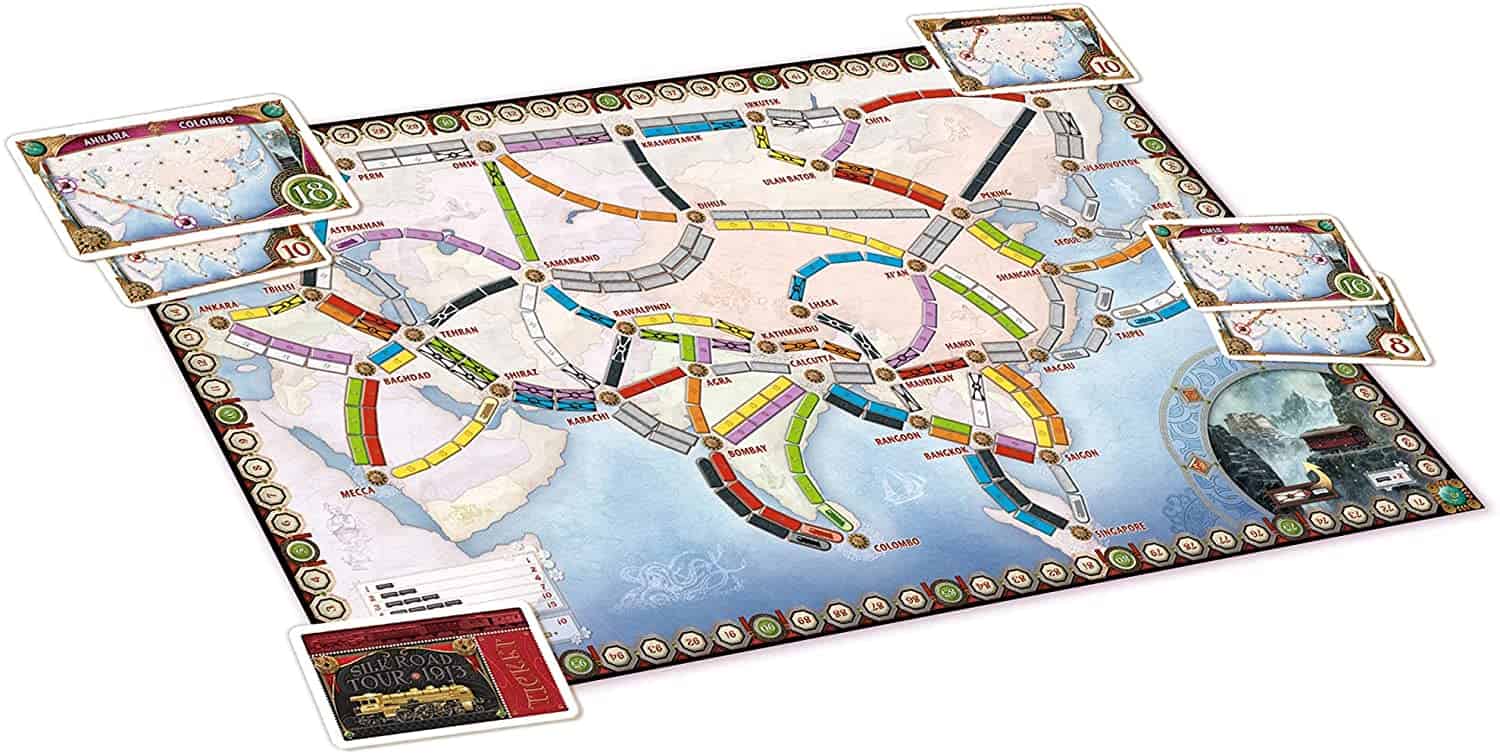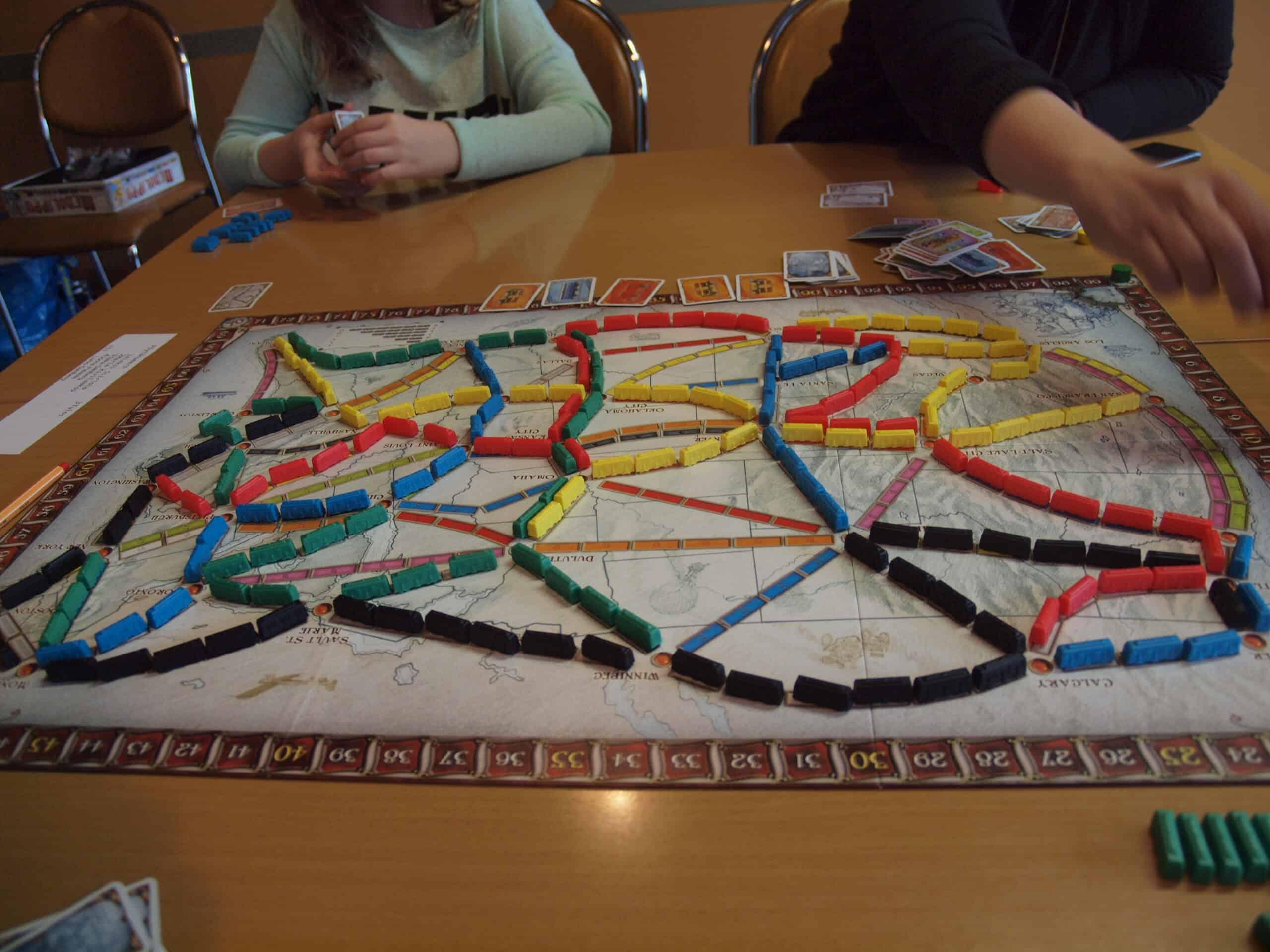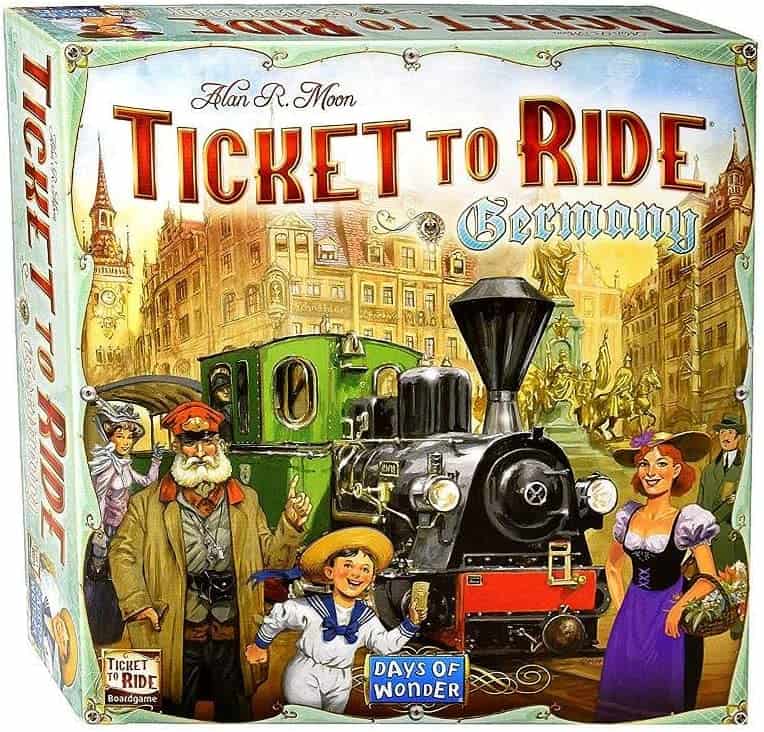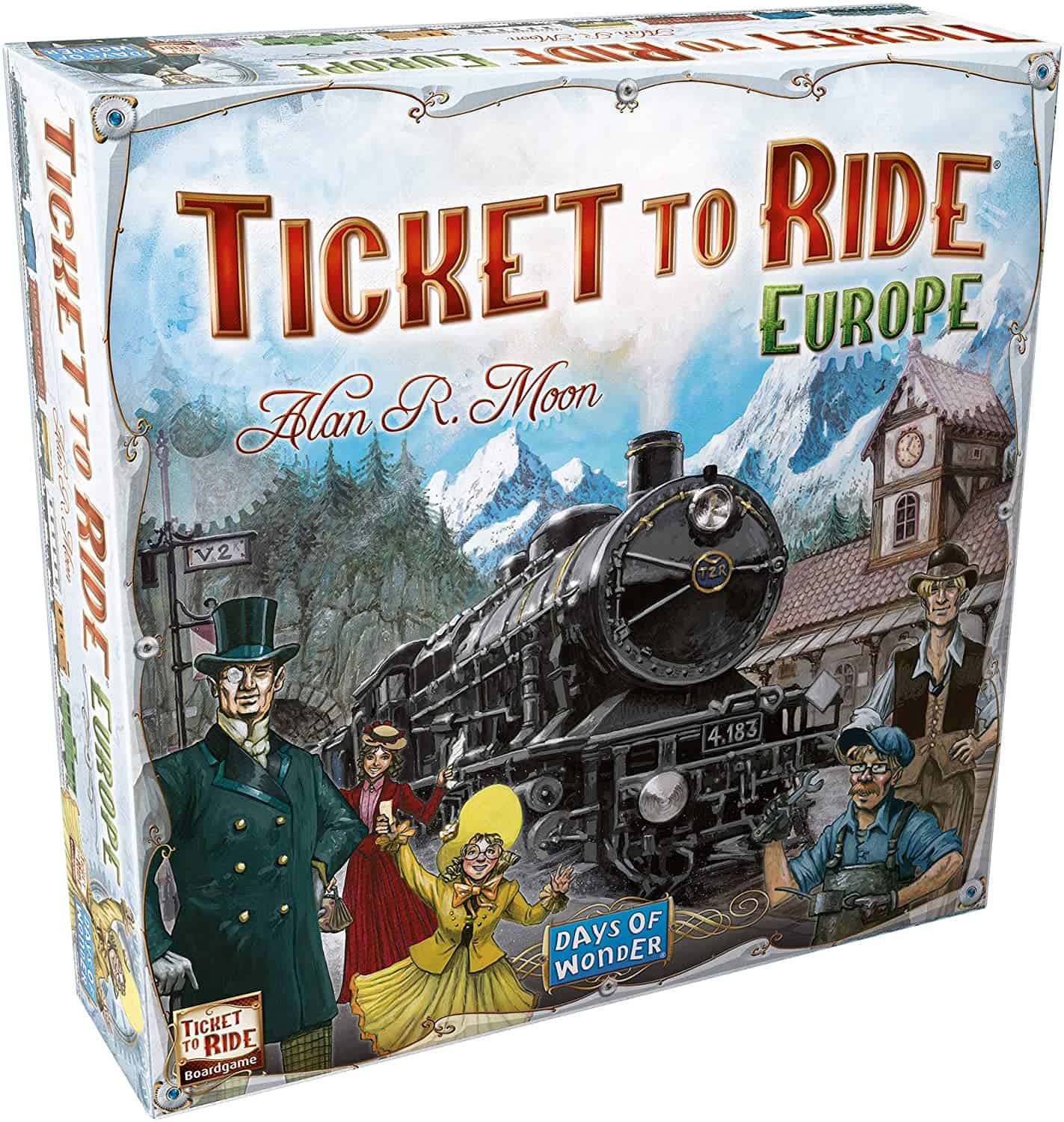For many free-spirited people, backpacking around Asia is a rite of passage. A wealth of culture is waiting to be discovered, with mountains to climb and rivers to swim in from Beijing to Kabul.
But what about those times when you’re stuck at home, too poor or busy to travel, and all you can think about are the better days that came before? That’s where Ticket to Ride Asia comes in.
Now, don’t get me wrong – I’m not trying to say a board game comes anywhere close to the experience of exploring a new place in-person – but it does give you the chance to learn about the Asian continent and all it has to offer (even if it’s from the comfort of your couch).
Plus, this is one more game to add to the collection for those who consider ourselves dedicated fans of Ticket to Ride. Let’s be honest, there’s no better feeling than getting your hands on a new expansion pack, and this one is a real gem.
With two exciting maps to explore, Ticket to Ride Asia has more than a few exciting tricks up its sleeve. Read on to find out everything you need to know.
Ticket to Ride Asia: A Quick Overview

- Players: 2-6
- Recommended age: 8+
- Playing time: 30-60 minutes
Ticket to Ride Asia is the first volume of Ticket to Ride’s Map Collection. It contains two excellent maps – Team Asia and Legendary Asia – allowing you to team up with friends or face treacherous mountain paths on your own.
For many Ticket to Ride fans, Volume One of the Map Collection is not only the first but also the best location-based expansion pack.
What’s New in Ticket to Ride Asia?
The Asia expansion pack includes:
- 36x Destination tickets (30 regular and 6 Long Routes)
- 6x cardholders
- 9x plastic trains in each of five colors
- A double-sided map
You will need the following components from a previous version of Ticket to Ride:
- 45x trains per player with matching scoring markers
- 110x Train Car cards
New Features

Ferries
Ferries link two adjacent cities across a body of water and can be identified easily by locomotive icon(s) on at least one of the spaces on the route.
To claim a ferry route, you’ll need to play a locomotive card for each corresponding symbol on the route and the standard set of cards of the correct color for the rest of the spaces.
Double Routes
The Legendary Asia map is designed for between two and five players. In games at the higher end of this range, both tracks of a double-route may be claimed (not by the same player, though, sadly!).
Take note: this rule doesn’t apply to smaller games. Double routes can only be claimed once for those of us with just one or two friends.
Now for what is, in my opinion, one of the best bits of the game…have you noticed some gray routes run beside colored routes? Well, good news! You can use cards of any color to claim these routes, as long as the cards all match.
Mountain Routes
Beware of mountain routes! They can cause wear and tear on trains that travel them. While I love the realism of this rule, I won’t lie; I also hate it for making the game so challenging.
To claim a Mountain Route, you have to:
- Play the usual set of cards using the right color and quantity
- Discard one train for each X on the route
Discarded trains should be placed on the Mountain Crossing area of the map. However, all is not lost – you gain two points for each discarded train.
End Game Bonuses
The player(s) who has successfully connected the most cities in a continuous network is awarded an awesome ten-point Asian Explorer bonus card.
Pay close attention to each player’s counting accuracy, though – each city may only be counted once, so don’t let anybody cheat!
The player with the most points wins.
How to Play

If you’re new to Ticket to Ride, this part of the guide is for you. Not only will I explain how to play a complete game, but I’ll also share any tips and tricks I’ve learned over the years.
So listen up and prepare to become a Ticket to Ride pro!
Aim of the game
Being a Ticket to Ride champion is all about earning points, which you can do by:
- Completing a longer continuous path of routes than all your fellow players
- Complete a set of routes listed on your Destination Tickets between two cities
- Claim a route between two cities
Setup
Place the map in the center of the table and collect forty-five colored train cars each, along with a matching scoring marker which should be placed on the starting position.
After shuffling the Train Car cards, deal four to each player. The rest of the cards can be placed beside the board with the top five faceup. Don’t forget to put the bonus card for the longest route face-up somewhere where everyone can see it (and wish it was theirs!).
Shuffle the Destination Ticket cards and give three to each person. You have to keep at least two, but if you’re feeling confident (and like the destinations), you could choose to keep all three.
Put any returned tickets at the bottom of the deck next to the board.
Taking a turn
When it’s your turn, you have three options:
- Draw Train Car cards
- Claim a route
- Draw Destination Tickets
Drawing Train Car cards
When you draw Train Car cards, take two from either the top of the deck or the already face-up cards. If you take face-up cards, replace them using the existing deck.
Drawing a locomotive card is both good and bad – good because they’re like wild cards, so you can use them in any other set, but bad because they mean you’re not allowed to pick a second card.
My top tip is to get as many locomotive cards as you can!
In Ticket to Ride Asia, locomotive cards can also be used to claim ferry routes.
When the Train Car cards deck is empty, shuffle the discarded cards to make a new one. Sadly, players can no longer draw Train Car cards during their turn if there aren’t any discarded cards.
How to claim a route

Whenever you claim a route, the cards you use must be of the same type and color and should match the number of spaces in the route. Don’t forget, if the route is gray, you can use cards of any color!
Even if you’re in a strong position and think you could claim multiple routes, you’re only allowed to claim one per turn. I’m a pretty impatient person, so I used to find this rule frustrating, but it’s good to wait and think carefully about what to do during your next turn.
When you claim a new route, remember to move your scoring marker.
Drawing Destination Ticket cards
I’d only recommend drawing more Destination Tickets if you’re in a strong position with plenty of Train Car cards. Take three from the top of the deck and choose at least one to keep.
You could choose to keep all of them, but this strategy is rarely advisable. You’ll lose points for any routes you haven’t completed at the end of the game, so always think ahead.
Ending the game
When any player’s collection of trains gets down to two or less, it’s time for the final round. You each get just one more turn (at this point, it’s always very tense!).
You should have kept track of the points you earned throughout the game for completing routes; if you have, working out your final score will be much easier.
Destination Tickets, which have (if you played by the rules) been kept secret up until this point, can finally be revealed. You’ll lose points for any incomplete routes.
The final step is to compare each player’s routes. The person (or people) with the longest continual route gets a ten-point bonus, and the player with the most points wins.
Team Asia
Ticket to Ride Asia comes with two maps, the second of which is called Team Asia.
This is a highly detailed map that isn’t suitable for beginners. Playing as a team is difficult, especially since your communication is limited. The best way to learn how to play is to carefully study the official rules of the expansion pack.
Here’s an overview of how the game is different:
- It is played with two or three teams made of two people each
- Teams sit together and play in succession
- Individual players get their own Train Car cards and twenty-seven trains, as well as their own hand of Destination Tickets
- Each player reveals one Destination Ticket to their teammates when the game begins; the rest are kept secret
- You can use a turn to reveal two Tickets to your teammate
- When you draw Train Car cards, you have to decide whether to keep them in your hand or put them in a communal cardholder
- Face-up locomotive cards have to go into the communal cardholder
- The end of the game occurs when one team collectively has four or fewer trains
Alternatives to Ticket to Ride Asia
Ticket to Ride Germany

Ticket to Ride Germany is a standalone game rather than an expansion pack, so you don’t need the base game to play. It combines two expansion packs, Zug um Zug: Deutschland and Deutschland 1902, and is widely thought to be one of the best Ticket to Ride spin-off games.
You can find out more in our Ticket to Ride Germany guide.
- Players: 2-5
- Recommended age: 8+
- Playing time: 30-60 minutes
Ticket to Ride Europe

Ticket to Ride Europe offers one of the most expansive and varied maps, embodying everything great about travel games. With ferries across oceans and tunnels under mountains, this expansion pack brings a whole new dimension to Ticket to Ride.
Our Ticket to Ride Europe guide explains everything you need to know.
- Players: 2-5
- Recommended age: 8+
- Playing time: 30-60 minutes
Ticket to Ride India

Ticket to Ride India is the perfect expansion for experienced players because it adds extra pressure to finish shorter routes as quickly as possible, mimicking the densely populated landscape of India. With a whole host of new features such as mandala bonuses and tunnels, this is one expansion pack not to be missed.
Discover more about Ticket to Ride India in our comprehensive guide.
- Players: 2-4
- Recommended age: 8+
- Playing time: 30-60 minutes
Frequently Asked Questions
Question: Is Ticket to Ride Asia a standalone game?
Answer: It’s an expansion pack, so you’ll need a copy of the original Ticket to Ride.
Question: Which map in Ticket to Ride Asia is best?
Answer: Overall, I prefer the Legendary Asia map because it’s easier to play and, therefore, a lot more fun. Team Asia is a challenging map made even more difficult by the introduction of teams.
Question: What other Ticket to Ride expansions are available?
Answer: Great expansions include:
• Ticket to Ride Germany
• Ticket to Ride Africa
• Ticket to Ride 1910
Question: What’s the best strategy for Ticket to Ride Asia?
Answer: You can use many strategies in Ticket to Ride and its expansion packs. Find out what they are and how to use them in this strategy guide.
Question: What’s the best Ticket to Ride expansion pack?
Answer: My favorite expansion pack is Ticket to Ride 1910. It offers new ways to play and plenty of exciting features to keep new and old Ticket to Ride fans engaged.
Find out more in our Ticket to Ride 1910 guide.
Question: Is Ticket to Ride Asia a good family game?
Answer: Ticket to Ride Asia is an excellent family game, especially since it comes with a map that allows you to play as part of a team. This can be challenging, but playing with family members you know very well makes it slightly more manageable (and a lot more fun).
Recommended reads:
- A Complete Overview of Ticket to Ride
- Best Ticket to Ride Strategies
- A Complete Overview of Ticket to Ride New York
- Stratego Pieces Explained – Must-Know Facts - February 28, 2023
- Wahoo Board Game Guide – AKA Aggravation Guide - February 22, 2023
- Pokemon Monopoly Guide - February 22, 2023

